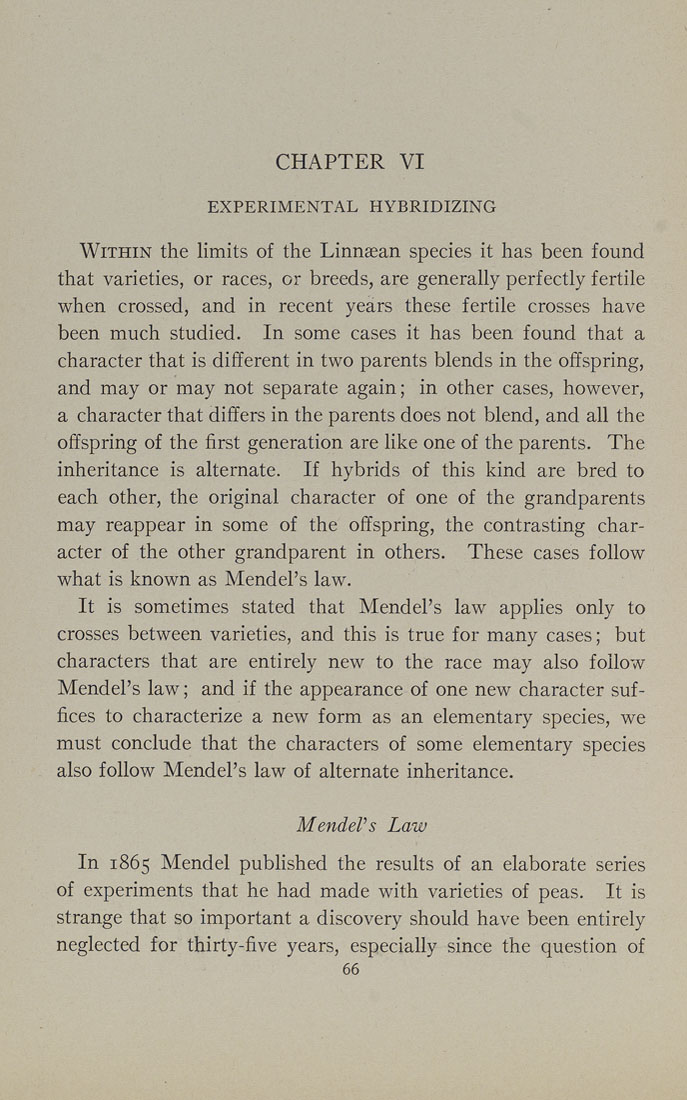CHAPTER VI
EXPERIMENTAL HYBRIDIZING
Within the limits of the Linnaean species it has been found
that varieties, or races, or breeds, are generally perfectly fertile
when crossed, and in recent years these fertile crosses have
been much studied. In some cases it has been found that a
character that is different in two parents blends in the offspring,
and may or may not separate again; in other cases, however,
a character that differs in the parents does not blend, and all the
offspring of the first generation are like one of the parents. The
inheritance is alternate. If hybrids of this kind are bred to
each other, the original character of one of the grandparents
may reappear in some of the offspring, the contrasting char¬
acter of the other grandparent in others. These cases follow
what is known as Mendel's law.
It is sometimes stated that Mendel's law applies only to
crosses between varieties, and this is true for many cases; but
characters that are entirely new to the race may also follow
Mendel's law; and if the appearance of one new character suf¬
fices to characterize a new form as an elementary species, we
must conclude that the characters of some elementary species
also follow Mendel's law of alternate inheritance.
Mendel's Law
In 1865 Mendel pubfished the results of an elaborate series
of experiments that he had made with varieties of peas. It is
strange that so important a discovery should have been entirely
neglected for thirty-five years, especially since the question of
|








